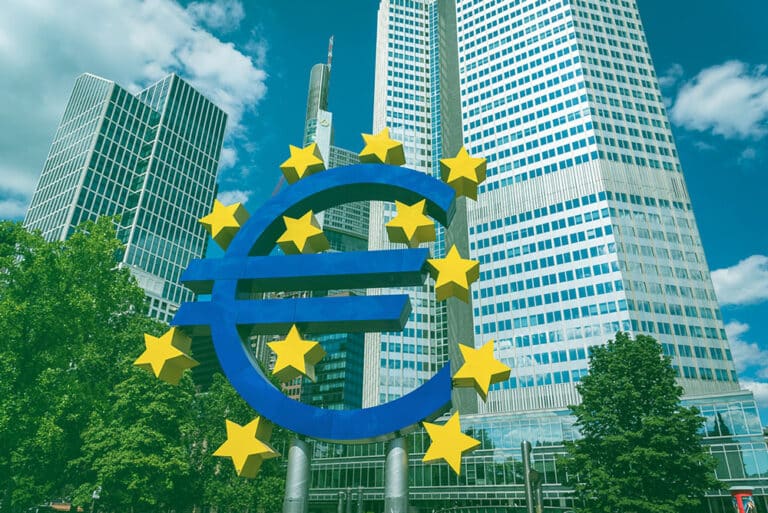
As widely expected, the European Central Bank (ECB) cut its key policy rates for the first time in five years. The interest rate on the main refinancing operations, the marginal lending facility, and the deposit facility were each lowered by 25 basis points to 4.25%, 4.5%, and 3.75%, respectively.
The ECB’s decision to ease its policy restrictiveness comes after nine months of holding policy rates steady. While the decision had been well-flagged, the incoming economic data over recent weeks has prompted markets to revise their expectations for the policy path, reducing the number and pace of cuts in 2024. ECB President Christine Lagarde today noted that the ECB was not in a “dialing back phase,” signaling that back-to-back rate cuts are unlikely, and therefore adding conviction to reduced rate cut expectations.
Economic backdrop
The justification for starting policy rate cuts is evident. The Euro area’s inflation backdrop has improved immensely over the past year, with inflation in late 2023 falling at a faster pace than it had risen and inflation expectations remaining firmly anchored.
However, the rationale for further rate cuts beyond June has become increasingly unclear recently. Euro area disinflation progress has started to stall with the latest inflation print surprising to the upside, while the ECB’s indicator of negotiated wages rose in Q1, defying the central bank’s expectations for an easing. In addition, evidence of solid employment growth and a cyclical economic upturn have reduced the market’s confidence that inflation will trend lower over the coming months.
Also read: GDP. The Good, The Bad And The Ugly
Economic forecasts
The ECB published its updated full-year average staff projections. The GDP growth projection was revised higher for this year:
• 2024: 0.9% (upward revision from 0.6% in March)
• 2025: 1.4% (downward revision from 1.5%)
• 2026: 1.6% (unchanged)
The headline inflation outlook was upwardly revised for this year and next year:
• 2024: 2.5% (increase from 2.3% in March)
• 2025: 2.2% (increase from 2.0%)
• 2026: 1.9% (unchanged)
With these new forecasts, the ECB has chosen to cut rates even as it raises its inflation projections, and even though it only projects headline inflation to reach the 2% target in 2026. When Lagarde was questioned about this discrepancy, she responded that although inflation projections have been revised slightly higher, the ECB is growing in confidence that the overall trend in inflation is downwards, giving them strong conviction in today’s decision.
Policy outlook
Although today’s decision was fully anticipated, the market will inevitably be pondering the fact that the European Central Bank is cutting policy rates into a cyclical economic upturn, and despite upward revisions to its inflation projections.
Taking a step back, inflation has descended meaningfully in the past year and inflation expectations are anchored, justifying the decision to reduce policy restrictiveness. Yet, the upward revisions to the ECB’s inflation forecast, as well as the recent upside surprises to wage growth and economic activity, do emphasize the need for a cautious approach to future policy decisions. Unsurprisingly, Lagarde was careful to avoid pre-committing to a future policy path, providing little clarity about the number of cuts or the speed of easing going forward.
With the ECB also needing to consider the Federal Reserve’s slower start to its rate cutting cycle and the associated downward pressure that it’s putting on the euro, the future pace of rate cuts is likely to be measured and gradual. We expect ECB rate reductions in September and December, with a July cut now off the table.






























